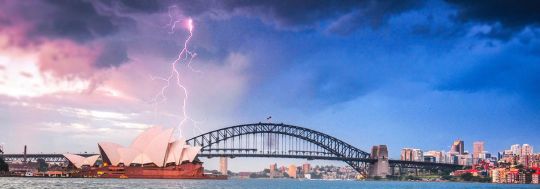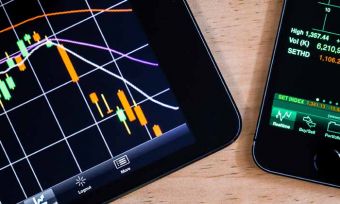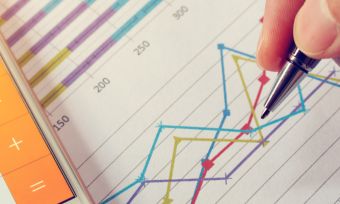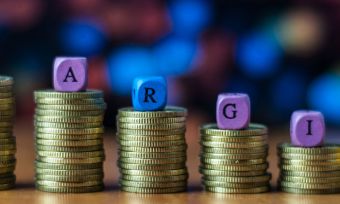Australia’s economy: The good and bad signs

It’s been 25 years since Australia experienced “the recession we had to have” in 1990 – the last time we ever had a recession. Since then, we’ve had one of the longest periods of uninterrupted growth of any nation in the developed world – another reason to label Australia ‘the lucky country’.
In true ‘Aussie battler’ fashion, Australia has defied the pessimists and continued to grow through a tough period that included the ‘Asian Contagion’, the ‘Tech Wreck’ and the ‘Global Financial Crisis’.
But lately, there has been plenty of talk about slumping commodity prices and the dramatic slowdown in China and how Australia’s record run of growth could be coming to an end. As a commodity-based country which exported around $98 billion of goods to China last year (about 60 percent of this was iron ore and coal), Australia is currently feeling the pinch from its biggest trading partner.
According to NAB research, Australians remain nervous amid elevated unemployment, subdued household income and wages growth, and an economic outlook clouded by the end of the mining investment boom and falling commodity prices.
Against this backdrop, it is not surprising that Australian consumers are reluctant to spend on “non-essentials”.
Yet, we’re not officially in a recession. This is unlike other commodity based economies like Canada and Brazil, who are less exposed to China but still suffered two consecutive quarters of negative growth this year – the technical definition of a recession.
These countries have reason to be jealous of Australia. Doug Porter, chief economist at Bank of Montreal, admitted to feeling this jealousy in a client note last month after Australia recorded GDP growth of 0.2 percent in the second quarter.
“That compares with the two down quarters in Canada to start the year,” he said.
“Heck, Australia has had only two down quarters in the past 14 years combined!”
As such, Porter describes Australia as “extraordinarily lucky”, but is our luck about to run out?
Goldman Sachs recently warned that Australia faces a one-in-three chance of recession in the coming financial year, but that sounds quite typical. Chief Economist of CBA Michael Blythe said that if you “back an economist into a corner and demand a recession probability estimate, the answer will almost certainly be 20%. It is the default forecast.”
Also, Australia has proven many recession predictions wrong. As the famous joke goes, economists have predicted nine of the last five recessions. Thus, it can be hard to take such forecasts and predictions seriously.
So let’s put all the media hype of doom and gloom aside and take a balanced look at some of the good and bad signs facing Australia’s economy.
The bad signs
- Weak GDP growth: Australia’s June quarter GDP growth of 0.2 percent was the slowest rate in more than two years. It was below expectations, with economists tipping it to be 0.4 percent. CPI figures released in October by the ABS also came in under expectations.
- Slow wages growth: The ABS announced that private sector wages grew at the slowest rate in at least 17 years in the 12 months to June. They grew by only 2.2 percent over the year – the slowest rate of growth since the data series began.
- Record high household debt: According to the RBA, the ratio of household debt to disposable income reached 153.8 percent in December 2014 – an all-time record high.
- Unsustainable house prices: The latest CoreLogic RP Data statistics showed that capital city dwelling prices rose 11.3 percent over the past year. Many are speculating that Australia is in the midst of a property bubble which would be disastrous for the economy if it were to burst. Even the International Monetary Fund (IMF) is concerned about the fast growth of Australia’s property prices.
- Debt trouble: Australia has foreign debt of just under AUD$1 trillion and the IMF has said that Australia’s current debt trajectory is the worst in the developed world.
- Volatile markets: The Australian share market has endured quite a rollercoaster ride over the past few months. The S&P/ASX 200 went from almost hitting 6000 points back in April to slumping below 5000 towards the end of September. But we’re not alone, with markets all over the world reacting with volatility over news regarding China, Greece and the US Federal Reserve.
The good signs
- Interest rate can go lower: Australia’s economy still has monetary policy up its sleeve, with the ability to pull interest rates even lower if the need arises. The cash rate is currently at a record low of two percent, but this is still well above most other major economies which are near zero – and there is speculation that the RBA will move again before the end of 2015.
- Low dollar: Although a low dollar can be the sign of a faltering economy, it is actually currently providing Australia with a timely boost. A year ago it was almost on par with the greenback, but the Australian dollar is currently trading at around US70¢. This helps make our exports more competitive and encourages Australians to spend more of their money on Australian goods and services.
- ChAFTA: The China-Australia Free Trade Agreement which is nearing implementation is a landmark deal which will secure future revenue for Australian exporters. In particular, Australian agribusiness will benefit greatly with the Chinese market worth $8 billion to the sector last year.
- Earnings for non-mining sector rising: With all of the talk of the decline in Australian mining over the last few years, not much has been heard about the rapid rise in profits outside of mining. Earnings for the non-mining sector grew by eight percent in the year to June 2015 – the fastest pace of growth in five years. This is a sign of the transition the Australian economy is going through.
- New PM boosted confidence: In the week that saw Malcolm Turnbull become Prime Minister, consumer confidence in Australia jumped by 7 percent. With a successful self-made millionaire in the top job, it seems that Australians feel a little bit more comfortable about how the country will be run.
- Unemployment rate steady: Despite all the market turmoil, the unemployment rate has remained fairly steady. ABS reported last month that the rate dropped in August from 6.3 to 6.2 percent.
What to make of it all
So what should we make of all of this? Yes, there is a lot of talk about an upcoming recession in Australia, but don’t forget that fear sells newspapers. The media does tend to focus on the negatives (if it bleeds, it leads), so when the share market has a particularly bad day, we tend to come across headlines screaming about the billions that have been bled out of the value of shares in one day. But it is rare to come across headlines raving about the billions that have been wiped on in a rally.
The media fear-mongering doesn’t help the situation in the slightest. In reality, Australia does have a fair amount to be hopeful about.
The truth is no one really knows what will eventuate. There will always be booms and busts so people need to sit tight and ride them out. The classic never-say-die attitude that Aussies are famous for should see us through rough times towards greener pastures – as we have done so these past 25 years.







